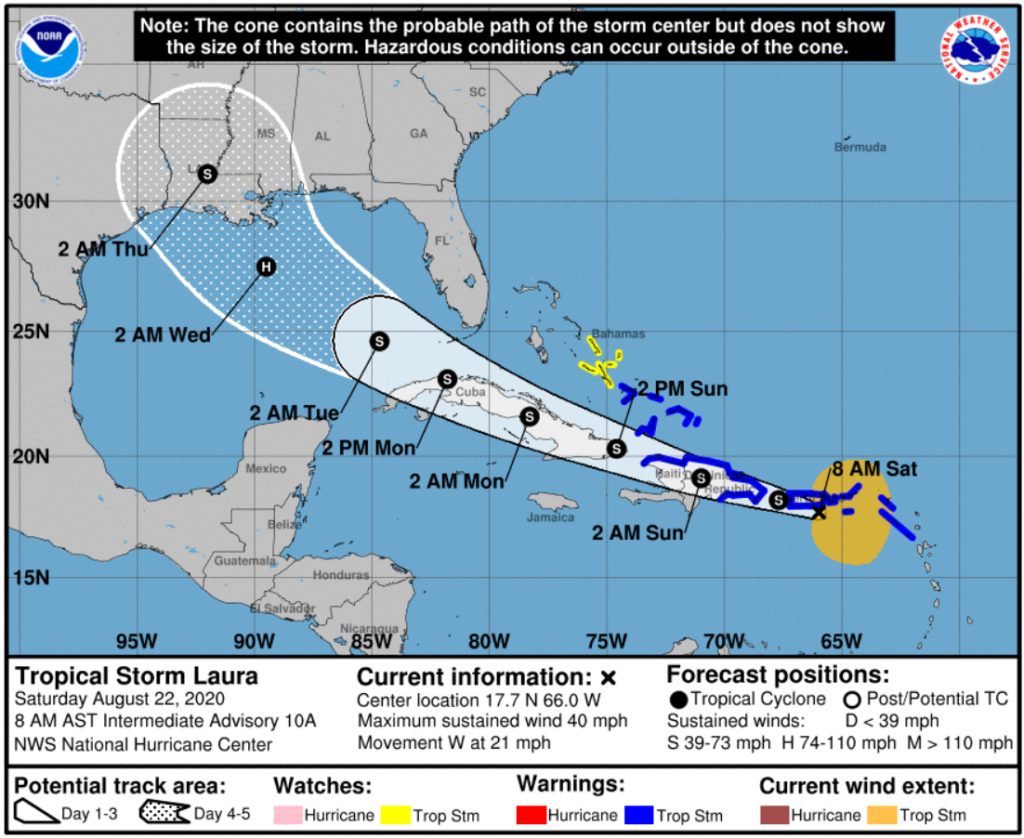“The only constant in life is change”-Heraclitus

It’s the time of year when we watch the weather carefully. We’re from Florida and have experienced our fair share of stormy weather, from the afternoon thunderstorm that can pack 50-knot gusts to tropical storms with sustained high winds that can last for days and make sensitive crew seasick at anchor. We’ve managed to avoid hurricanes since we bought the boat (though we’ve experienced a few in a house), both by luck and by active avoidance. We’ve spent past hurricane seasons in “safe” places like the Patomac River, Grenada, Panama, and Guatemala. We know our limits—when to hunker down, when to sail away, or when to tie up the boat and evacuate.
Watching weather analysis videos or tracking storms with NOAA is a whole-family affair. We usually have a lot of warning before a storm threatens, giving us time to plan. Even when a forecasted track crosses our path, there is a lot of wiggle room in the “Cone of Uncertainty.” For those who do software development, project management, or live in a hurricane zone, this is a familiar concept. Those watching weather reports know that it’s that shaded patch between “where the storm is now” and “where the storm is likely to land,” fanned out to account for margin of error. Small directional changes at the point of origin result in large changes as you follow a trajectory. And just because you’re “inside the cone” doesn’t mean you’re going to get hit, nor does being “outside the cone” guarantee nice weather!
The Cone of Uncertainty is a helpful tool for assessing danger and for making decisions about risk mitigation. In some ways, the computer models that predicted spread of the new global pandemic are like hurricane models. Remember the red circles on the Johns Hopkins COVID-19 map? Even now, getting a visual picture of higher-risk areas could be a useful tool for deciding whether to travel, for example. Unfortunately, right now it feels like the whole world is living inside a Cone of Uncertainty! Even if you live in a place of relative safety, the Butterfly Effect predicts that you will still be affected by small changes in faraway places, like economic fluctuations, social unrest, global supply chain disruptions, or travel bans.
Uncertainty is nothing new. We humans may operate under the assumption that we are in control, but our lives are, in fact, fragile, circumstances can change quickly, and safety is largely an illusion. Instead of crippling us, this realization gave us the courage to leave suburbia and buy a boat. We thought, “Since we can’t know what tomorrow brings, we’d better enjoy today!”
Living on the water has helped us to grow comfortable with discomfort. On the boat, we are affected by weather changes, motion, breakage, and the whims of officials in foreign ports. I am a planner by nature, and sudden changes and a lack of predictability rocked my boat (sometimes literally) at the beginning of this adventure. But living aboard for more than a decade has helped me learn to recover a lot faster when plans change and to develop qualities that make survival inside the Cone of Uncertainty possible: patience, courage, persistence, creativity, perspective, faith, and peace of mind.
I am reminded of the oft-quoted Serenity Prayer, “God, grant me the serenity to accept the things I cannot change; the courage to change the things I can; and the wisdom to know the difference.” I also found a helpful article on mental health during COVID-19 that offered these five strategies and lots of practical tips (see link below) :
- Take action on the things you can control.
- Challenge your need for certainty.
- Learn to accept uncertainty.
- Focus on the present.
- Manage stress and anxiety.
